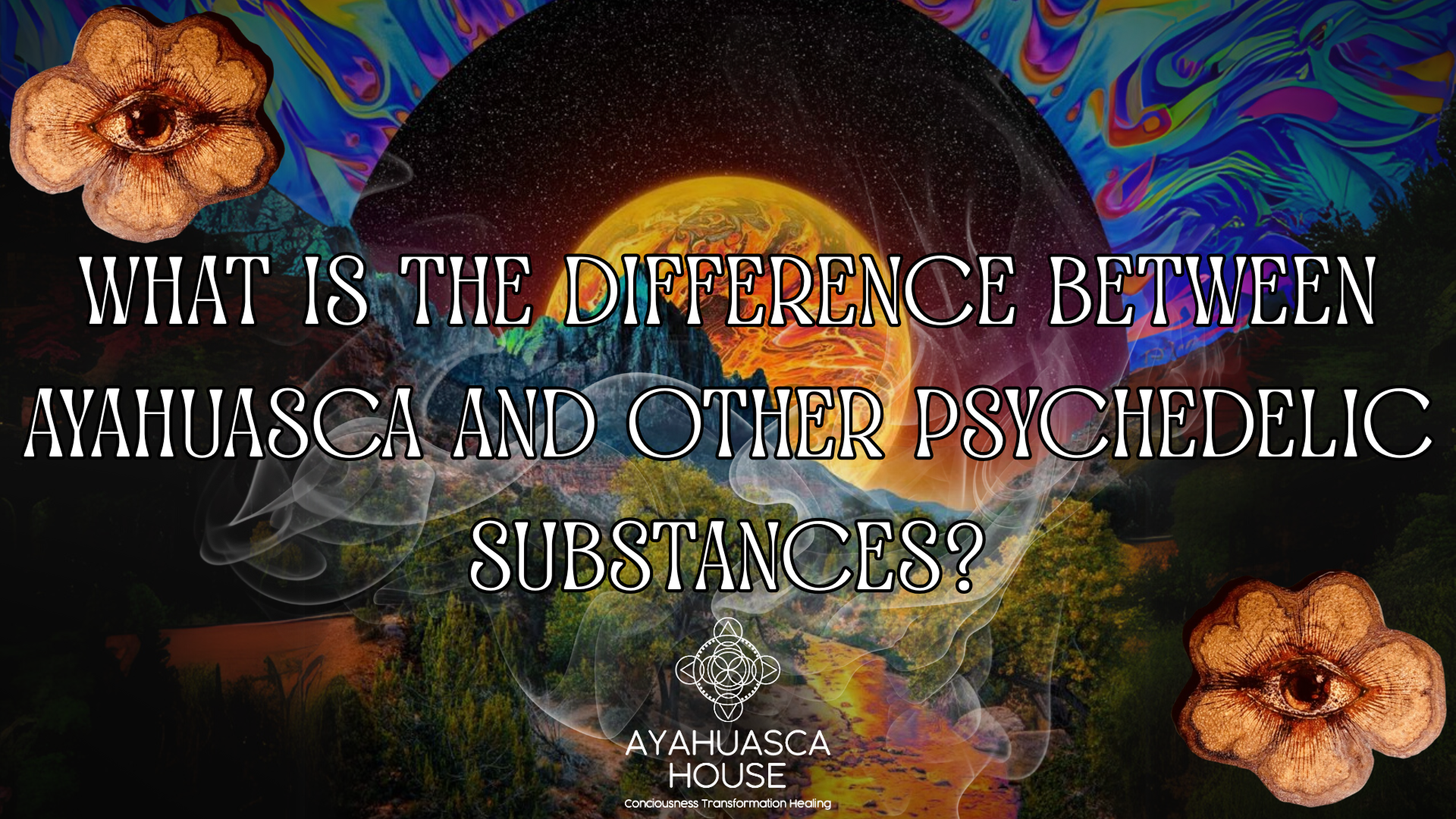Ayahuasca has gained global recognition as a powerful tool for healing and spiritual growth, but how does it compare to other psychedelic substances? Understanding the difference between ayahuasca and other psychedelics can help you make informed decisions about their use. In this article, we’ll explore the unique characteristics of ayahuasca and how it stands apart from substances like psilocybin mushrooms, LSD, and DMT.
What is Ayahuasca?
Ayahuasca is a traditional Amazonian brew made from the Banisteriopsis caapi vine and Psychotria viridis leaves. It contains DMT (N,N-Dimethyltryptamine) , a potent psychoactive compound that induces profound altered states of consciousness. Unlike many other psychedelics, ayahuasca is deeply rooted in indigenous traditions and is often used in ceremonial settings guided by experienced shamans. The difference between ayahuasca and other psychedelics becomes clear when examining its cultural and ritualistic significance.
Key Differences Between Ayahuasca and Other Psychedelics
The difference between ayahuasca and other psychedelics lies in several factors, including their composition, effects, and cultural context. Let’s break it down:
1. Composition
- Ayahuasca : Combines DMT with MAO inhibitors (from the Banisteriopsis caapi vine), allowing the DMT to be orally active. This combination creates a longer-lasting and more introspective experience.
- Other Psychedelics : Substances like psilocybin mushrooms, LSD, and pure DMT have simpler compositions. For example, DMT is typically smoked or vaporized for a short, intense trip. Understanding the difference between ayahuasca and other psychedelics starts with recognizing these compositional variations.
2. Duration of Effects
- Ayahuasca : The effects last 4–6 hours, providing a deep, immersive journey that unfolds gradually.
- Other Psychedelics :
- Psilocybin mushrooms: 4–6 hours.
- LSD: 8–12 hours.
- Smoked DMT: 10–30 minutes.
- This difference in duration highlights another key aspect of the difference between ayahuasca and other psychedelics .
3. Cultural and Spiritual Context
- Ayahuasca : Rooted in indigenous Amazonian traditions, ayahuasca ceremonies are deeply spiritual and often guided by shamans. Participants view it as a sacred medicine for healing and self-discovery.
- Other Psychedelics : While some psychedelics (like psilocybin) also have cultural roots, many are used recreationally or in modern therapeutic settings without specific rituals. This cultural dimension is a defining factor in the difference between ayahuasca and other psychedelics .
4. Physical and Emotional Effects
- Ayahuasca : Known for inducing purging (vomiting or diarrhea), which is seen as a cleansing process. Emotionally, it often brings buried feelings to the surface.
- Other Psychedelics : Effects vary widely. For example, LSD can enhance creativity and sensory perception, while psilocybin often promotes introspection and emotional breakthroughs. These differences underscore the difference between ayahuasca and other psychedelics .
5. Therapeutic Potential
- Ayahuasca : Research suggests it may help treat depression, anxiety, PTSD, and addiction. Its ceremonial context emphasizes integration and long-term healing.
- Other Psychedelics : Psilocybin and LSD are also being studied for mental health treatment, particularly for depression and PTSD. However, they lack the ritualistic framework of ayahuasca. This distinction further highlights the difference between ayahuasca and other psychedelics .
Why Choose Ayahuasca Over Other Psychedelics?
While the choice depends on individual preferences and goals, here are some reasons why people might prefer ayahuasca:
1. Holistic Healing
- Ayahuasca addresses physical, emotional, and spiritual aspects of healing, making it a comprehensive tool for transformation. This holistic approach is a key part of the difference between ayahuasca and other psychedelics .
2. Guided Experience
- Ceremonies are led by experienced shamans, ensuring safety and support throughout the journey.
3. Cultural Depth
- The rich cultural heritage of ayahuasca adds a layer of meaning and respect to the experience.
Tips for Choosing Between Ayahuasca and Other Psychedelics
If you’re considering psychedelics, keep these tips in mind:
1. Research Thoroughly
- Understand the effects, risks, and cultural significance of each substance before deciding. Knowing the difference between ayahuasca and other psychedelics is crucial for making an informed choice.
2. Set Clear Intentions
- Whether choosing ayahuasca or another psychedelic, approach the experience with clear intentions and an open mind.
3. Choose Safe Settings
- For ayahuasca, attend ceremonies with reputable facilitators. For other psychedelics, ensure you’re in a safe and supportive environment.
FAQs About the Difference Between Ayahuasca and Other Psychedelics
What makes ayahuasca different from other psychedelics?
Ayahuasca combines DMT with MAO inhibitors, lasts longer, and is deeply rooted in indigenous traditions, setting it apart from substances like psilocybin or LSD. The difference between ayahuasca and other psychedelics is evident in its composition, duration, and cultural context.
Is ayahuasca safer than other psychedelics?
When used in a controlled ceremonial setting, ayahuasca is generally considered safe. However, its intense effects require proper preparation and guidance.
Can I use ayahuasca and other psychedelics together?
Combining ayahuasca with other substances is not recommended due to potential interactions and increased risks.
Conclusion
Understanding the difference between ayahuasca and other psychedelics highlights the unique qualities of each substance. While ayahuasca offers a deeply spiritual and holistic experience, other psychedelics provide diverse benefits depending on individual needs. By approaching these substances with respect, research, and intention, you can unlock their transformative potential safely and responsibly. Recognizing the difference between ayahuasca and other psychedelics is the first step toward making informed choices about your journey.
